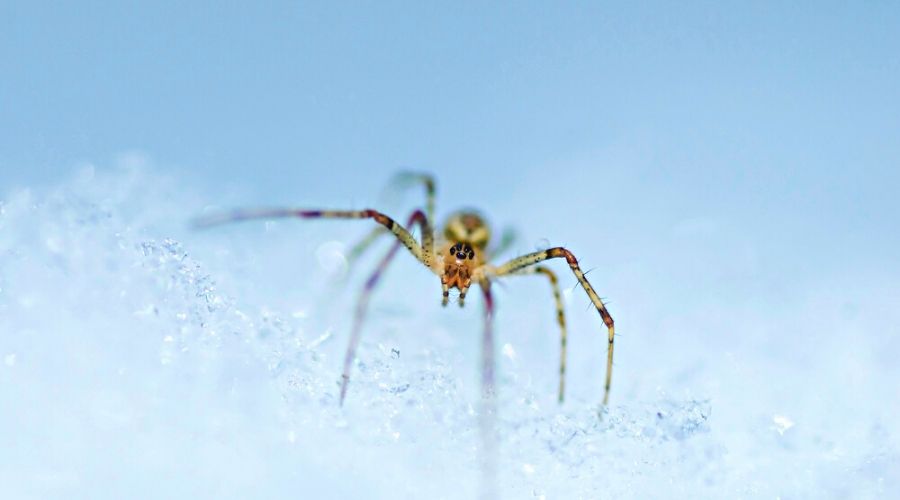
Spiders, those eight-legged wonders that often elicit both fascination and fear, are fascinating creatures adapted to a wide range of environments. One intriguing aspect of their biology is their cold-blooded nature. Unlike mammals and birds who maintain a constant internal body temperature, spiders rely on external sources like the sun or warm surfaces to regulate their body heat. This means they are highly sensitive to changes in environmental temperature, particularly during colder months.
This article delves into the fascinating world of spider survival strategies during winter. We’ll explore their unique biology, how they cope with freezing temperatures, and the impact of climate change on these remarkable creatures. From hibernation to seeking out warm shelters, we’ll uncover the secrets behind spiders’ resilience in the face of winter’s chill.
Spider Biology and Cold Tolerance
Are spiders cold or warm blooded? Spiders belong to the class Arachnida, which are classified as ectotherms, commonly known as “cold-blooded” animals. This means they lack the internal mechanisms to generate their own body heat. Instead, they rely on external sources like sunlight, warm surfaces, and even the bodies of their prey to maintain a suitable temperature for survival.
Despite being cold-blooded, spiders possess remarkable adaptations that allow them to tolerate extreme temperatures. Their exoskeletons, made of chitin, provide insulation against the cold. Some species also produce antifreeze compounds in their hemolymph (blood) which prevent ice crystals from forming and damaging their tissues. These physiological mechanisms enable spiders to survive even in freezing conditions.
Interestingly, do spiders feel cold? While they don’t experience cold sensations like humans, spiders are undoubtedly affected by temperature changes. When temperatures drop too low, their metabolic rate slows down significantly, leading to reduced activity levels and a state of dormancy. This is a survival strategy that allows them to conserve energy during harsh winter months.
Winter Survival Strategies
As winter approaches, spiders employ various strategies to ensure their survival. One common tactic is to seek out sheltered locations like under rocks, logs, leaf litter, or even inside human structures. These shelters provide protection from the elements and help maintain a more stable temperature.
Another strategy involves reducing their metabolic rate and entering a state of dormancy. This slows down their bodily functions, allowing them to conserve energy during periods of food scarcity and extreme cold. Some species may also spin silken retreats or cocoons that offer additional insulation and protection from predators.
Hibernation in Spiders
While not all spiders hibernate, some species do enter a prolonged state of dormancy during winter. This involves significantly reducing their metabolic rate, heart rate, and breathing, essentially entering a deep sleep-like state. During hibernation, spiders rely on stored energy reserves accumulated during warmer months to sustain themselves.
Hibernating spiders typically choose sheltered locations like underground burrows or crevices in trees where temperatures remain relatively stable. They may also spin silken retreats within these shelters for added protection. When spring arrives and temperatures rise, they emerge from their dormant state, ready to resume their active lives.
Factors Influencing Hibernation
Several factors can influence whether a spider hibernates, including species, geographic location, and environmental conditions. For example, spiders living in colder climates are more likely to hibernate than those in warmer regions. Additionally, the availability of food resources and shelter can also play a role in hibernation behavior.
Finding Warmth During Winter
Even for spiders that don’t fully hibernate, finding warmth during winter is crucial for survival. They may seek out sunny spots on rocks or walls to bask in the sun’s rays. Some species even venture into human structures like homes and garages where temperatures are more stable.
Spiders can also utilize their bodies to generate a small amount of heat through metabolic processes. However, this is not enough to maintain a constant body temperature, so they still rely heavily on external sources of warmth.
Impact of Climate Change on Spiders
Climate change poses a significant threat to spiders and other cold-blooded creatures. Rising temperatures can disrupt their life cycles, alter their habitats, and increase the frequency and intensity of extreme weather events.
Warmer winters may lead to reduced hibernation periods, potentially causing energy depletion and increased vulnerability to predators. Conversely, hotter summers could result in dehydration and heat stress for spiders. These changes highlight the importance of understanding and mitigating climate change to protect these fascinating creatures.
Conclusion
Spiders are remarkable creatures that have evolved sophisticated strategies to survive the challenges of winter. Their cold-blooded nature, combined with adaptations like antifreeze compounds and hibernation, allows them to endure freezing temperatures and food scarcity. However, climate change poses a growing threat to their survival. By understanding the impact of warming temperatures on spiders, we can work towards protecting these fascinating creatures and ensuring their continued existence in our world.
